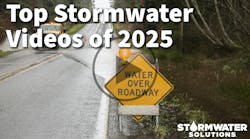Q&A: Rising Tide
Warmer temperatures around the globe are contributing to a rise in sea levels—a major issue for coastal ecosystems and cities. A new handbook on sea level rise from the U.S. Geological Survey (USGS) aims to provide a better understanding of coastal changes and help predict potential impacts. SWS Managing Editor Mary Beth Nevulis spoke with Thomas Doyle of USGS to learn more about the handbook.
Mary Beth Nevulis: What is the new sea level rise handbook from USGS, and how was it developed?
Thomas Doyle: In 2012, USGS conducted more than 30 training and feedback sessions with federal, state and nongovernmental organization coastal managers and planners across the northern Gulf of Mexico coast to evaluate current scientific understanding and utilization of resource aids and modeling tools for sea level rise assessment and planning purposes. The handbook represents a fairly comprehensive synthesis of the various decision support tools and predictive models compiled from the training sessions, online research and science publications. It was produced to describe the science and simulation models for understanding the dynamics and impacts of sea level rise for hindcasting and forecasting the potential impacts.
Nevulis: What kind of information does it contain?
Doyle: The handbook contains basic illustrations of the components of the Earth’s hydrosphere and effects of plate tectonics, planetary orbits and glaciation to show the long-term cycles of historical sea level rise and fall. Discussion of proper interpretation of contemporary sea level rates and trends from tide gauge stations and satellite altimetry missions are presented to show their complementary aspects and value for understanding variability in eustasy (ocean volume) and land motion for different coastal reaches of the U.S. Examples of the different types and classes of hydrology and ecosystem models are described and illustrated to inform experts and non-experts alike of the tools available to predict potential effects of future sea level rise at local and regional scale applications.
Nevulis: Why is this handbook important? Why should people read or refer to it?
Doyle: Global sea level is rising and may accelerate with continued fossil fuel consumption from industry and population growth. The process and tools for forecasting the submergence of our nation’s coastal zones under climate change is an evolving science and is not well understood.
Coastal wetlands of the southeastern U.S. are undergoing retreat and migration from increasing tidal inundation and saltwater intrusion attributed to climate variability and sea level rise. Much of the scientific literature describing potential sea level rise projections and modeling predictions are found in peer-reviewed academic journals or government technical reports largely suited to reading by other Ph.D. scientists who are more familiar or engaged in the climate change debate. This handbook has been designed as a one-stop layman’s read and resource for non-experts on the topic and tools for understanding the factors, rates and forecasts of sea level change and impact on coastal ecosystems. Its primary purpose by design was to serve as a reference guide and resource for coastal practitioners concerning sea level rise impact assessments and adaptation planning, providing a condensed but comprehensive read of the science and simulation models used currently to conduct sea level rise assessments for their education and informed decisions.
Download: Here

